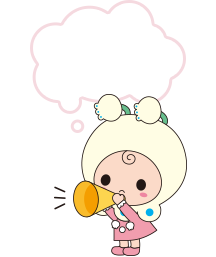 About Kobe Motomachi Shopping Street
About Kobe Motomachi Shopping Street
Notes on Google Translate (machine translation system)
Webpages other than the “About Kobe Motomachi Shopping Street” pages can be translated by Google Translate (machine translation system).
However, please note that text translated by Google Translate (machine translation system) may not be accurate. Therefore, please be careful when you view translated webpages, especially proper nouns may not be translated accurately. Please also note that there will be some parts which cannot be translated (e.g. characters/letters in images, PDF files, etc., text excluded from translation).
Please select language by clicking at the top of the page to use Google Translate.
at the top of the page to use Google Translate.
What kind of place is Kobe Motomachi Shopping Street?
Kobe’s quality features can be found in Motomachi. Kobe Motomachi Shopping Street is the leading shopping street in Kobe–the city filled with an exotic atmosphere–and is an interesting place to visit. You can find unique anecdotes and trivia regarding Kobe Motomachi Shopping Street in this webpage. You will enjoy this town even more after you learn about its attractions whether you are a frequent visitor or first-time visitor!
Kobe Motomachi Shopping Street Profile
-


The Long Long Street
Do you know how far the walking distance from one end of Kobe Motomachi Shopping Street to the other is? It is approximately 1.2 km and there are approximately 300 stores along the street. The street is located in the center of Kobe and many tourist attractions such as the former foreign settlement, Nankinmachi (Kobe’s Chinatown), Meriken Park and Harborland are nearby. The street lies between Motomachi Sta. and Kobe Sta. and you can easily access it from these stations, Kyukyoryuchi-Daimarumae Sta., Minatomotomachi Sta., Nishi-Motomachi Sta., Hanakuma Sta., etc.
The Long Long Street
Do you know how far the walking distance from one end of Kobe Motomachi Shopping Street to the other is?
It is approximately 1.2 km and there are approximately 300 stores along the street. The street is located in the center of Kobe and many tourist attractions such as the former foreign settlement, Nankinmachi (Kobe’s Chinatown), Meriken Park and Harborland are nearby. The street lies between Motomachi Sta. and Kobe Sta. and you can easily access it from these stations, Kyukyoryuchi-Daimarumae Sta., Minatomotomachi Sta., Nishi-Motomachi Sta., Hanakuma Sta., etc.
Which kind of stores are there?
If an average adult female walks along the whole street, it will be approx. 1850 steps in total!

If an average adult female walks along the whole street, it will be approx. 1850 steps in total!

-


Stylish Townscape
Kobe Motomachi Shopping Street is lively, yet has a relaxed atmosphere. The secret of “Motomachi being so characteristic” is due to its town development and landscape. Town development under the keywords, “classy”, “stylish” and “elegant” has been implemented according to the “Kobe Motomachi Shopping Street Landscape Planning Citizen Agreement” that was enacted in 2003. There are some regulations regarding buildings and signboards, etc. Each store owner endeavors to make their store look smart and trendy, and makes sure of proactively cleaning and greening the local area.
Stylish Townscape
Kobe Motomachi Shopping Street is lively, yet has a relaxed atmosphere.
The secret of “Motomachi being so characteristic” is due to its town development and landscape. Town development under the keywords, “classy”, “stylish” and “elegant” has been implemented according to the “Kobe Motomachi Shopping Street Landscape Planning Citizen Agreement” that was enacted in 2003. There are some regulations regarding buildings and signboards, etc. Each store owner endeavors to make their store look smart and trendy, and makes sure of proactively cleaning and greening the local area.
Every local resident cooperates with town development.

Every local resident cooperates with town development.

-


From 0 to 149 years old
Kobe Motomachi Shopping Street has many long-established stores. There are approximately 20 long-established stores which have more than 100 years of history. Among them, Akakabe Shoten has 149 years of history since its establishment, HIRAMURA Photo Studio and Kameido Sohonten have 147 years and 144 years of history, respectively. Many of the long-established stores were novelty and forefront businesses such as western confectionery, clothes, photography and beauty salons at that time and it proves that Motomachi was filled with an enterprising spirit. That sprit has been passed on and a variety of new stores have been opened. This town is a “New and Retrospective” town where new and old stores harmonize with each other.
From 0 to 149 years old
Kobe Motomachi Shopping Street has many long-established stores. There are approximately 20 long-established stores which have more than 100 years of history.
Among them, Akakabe Shoten has 149 years of history since its establishment, HIRAMURA Photo Studio and Kameido Sohonten have 147 years and 144 years of history, respectively. Many of the long-established stores were novelty and forefront businesses such as western confectionery, clothes, photography and beauty salons at that time and it proves that Motomachi was filled with an enterprising spirit. That sprit has been passed on and a variety of new stores have been opened. This town is a “New and Retrospective” town where new and old stores harmonize with each other.
16 stores have been opened since the Meiji period (1868–1912).

16 stores have been opened since the Meiji period (1868–1912).

-


Who is Motozukin-chan?
Motozukin-chan has cute rounded eyes and wears a hood that is designed to look like “suzuran-tou” (a decorative street lamp resembling lilies of the valley), which is a symbol of the town. The design and name of this mascot character of Kobe Motomachi Shopping Street were created by the public in 2009. She is a bit classic, was born in Kobe and now lives in Motomachi. She is cheerful and very curious, and likes shopping and walking. You can see her in the shopping street’s events such as parades and photo sessions. Please come to see Motozukin-chan!
Who is Motozukin-chan?
Motozukin-chan has cute rounded eyes and wears a hood that is designed to look like “suzuran-tou” (a decorative street lamp resembling lilies of the valley), which is a symbol of the town.
The design and name of this mascot character of Kobe Motomachi Shopping Street were created by the public in 2009. She is a bit classic, was born in Kobe and now lives in Motomachi. She is cheerful and very curious, and likes shopping and walking. You can see her in the shopping street’s events such as parades and photo sessions. Please come to see Motozukin-chan!
I am good at naginata (martial art with long handled swords) and love Kobe’s sweets!

I am good at naginata (martial art with long handled swords) and love Kobe’s sweets!

-


Various Events
In Kobe Motomachi Shopping Street, various events take place including those that the whole shopping street participate in and the characteristic ones held by each block of the street. The events include “Motomachi Night Market” in July, “Kobe Motomachi Music Week” and “Halloween” in October, “Motomachi Children’s Picture Competition and Exhibition” between April and May and “Art Exhibition by the Artist in Motomachi” in May. Not only these seasonal events, but also some other events are held regularly throughout the year. Please check the events webpages for details!
Various Events
In Kobe Motomachi Shopping Street, various events take place including those that the whole shopping street participate in and the characteristic ones held by each block of the street.
The events include “Motomachi Night Market” in July, “Kobe Motomachi Music Week” and “Halloween” in October, “Motomachi Children’s Picture Competition and Exhibition” between April and May and “Art Exhibition by the Artist in Motomachi” in May. Not only these seasonal events, but also some other events are held regularly throughout the year. Please check the events webpages for details!
“Motomachi Night Market” is a seasonal tradition of Motomachi and has been held for more than 35 years.

“Motomachi Night Market” is a seasonal tradition of Motomachi and has been held for more than 35 years.

History of Kobe Motomachi Shopping Street
-

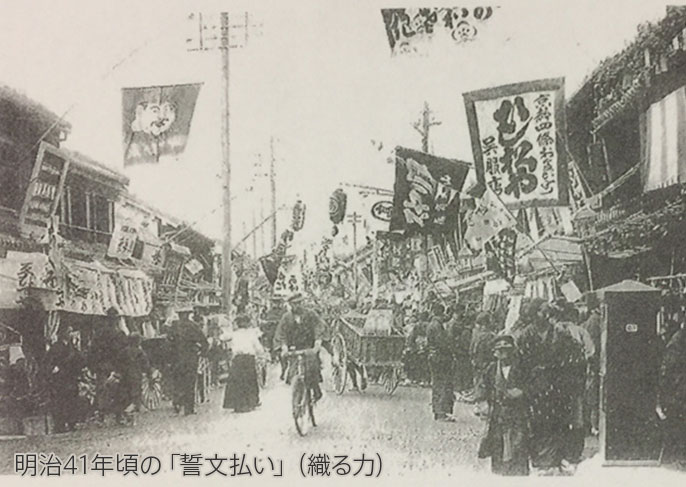
Being Cherished for More Than 140 Years
Kobe Motomachi Shopping Street has more than 140 years of history. Motomachi was actually “the town (machi) which had already existed from the original (moto)” and “the town (machi) which Kobe originated (moto) from”. 220 houses and buildings were lined side by side in the Edo period (1600–1867). It developed even more as people gathered after the opening of the Port of Kobe. It was renamed as “Motomachi Street” on May 20, 1874 and this day became the anniversary of Kobe Motomachi Shopping Street. Seimon-barai (a traditional bargain sale) started in about 1883 and the street was greatly crowded with people.
Being Cherished for More Than 140 Years
Kobe Motomachi Shopping Street has more than 140 years of history.
Motomachi was actually “the town (machi) which had already existed from the original (moto)” and “the town (machi) which Kobe originated (moto) from”. 220 houses and buildings were lined side by side in the Edo period (1600–1867). It developed even more as people gathered after the opening of the Port of Kobe. It was renamed as “Motomachi Street” on May 20, 1874 and this day became the anniversary of Kobe Motomachi Shopping Street. Seimon-barai (a traditional bargain sale) started in about 1883 and the street was greatly crowded with people.
Seimon-barai in the 21st century
Lots of signboards were written horizontally even in the Meiji period (1868–1912).
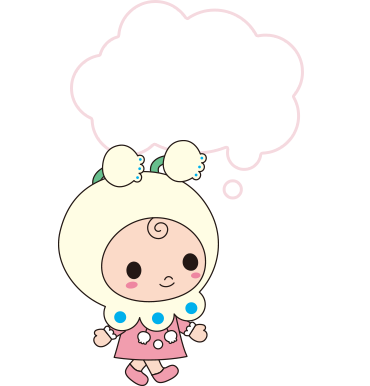
Lots of signboards were written horizontally even in the Meiji period (1868–1912).
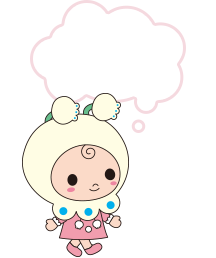
-

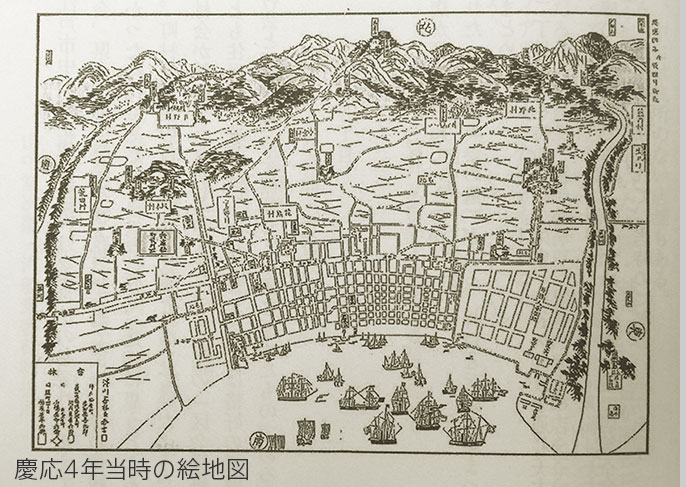
“Shitani, Shitani” (heads down, heads down)
Did you know that the street has a long and distinguish history? In fact, this was the important highway which was developed as Sanyo Road in the Heian period (794-1185) connecting Kyoto and Shimonoseki. It was called Saigoku Kaido (Saigoku Highway) from the early modern period and daimyo gyoretsu (feudal lord’s procession) passed through, saying “Shitani, shitani” (heads down, heads down). There were three villages, Kanbe-mura, Futatsuchaya-mura and Hashiudo-mura about 150 years ago. Various shops along the highway ensured the area was crowded and lively. Eventually it developed into a shopping street.
“Shitani, Shitani” (heads down, heads down)
Did you know that the street has a long and distinguish history?
In fact, this was the important highway which was developed as Sanyo Road in the Heian period (794-1185) connecting Kyoto and Shimonoseki. It was called Saigoku Kaido (Saigoku Highway) from the early modern period and daimyo gyoretsu (feudal lord’s procession) passed through, saying “Shitani, shitani” (heads down, heads down). There were three villages, Kanbe-mura, Futatsuchaya-mura and Hashiudo-mura about 150 years ago. Various shops along the highway ensured the area was crowded and lively. Eventually it developed into a shopping street.
Hashiudo Shrine in Motomachi 5 chome is ujigami (guardian god) of Hashiudo-mura.

Hashiudo Shrine in Motomachi 5 chome is ujigami (guardian god) of Hashiudo-mura.

-

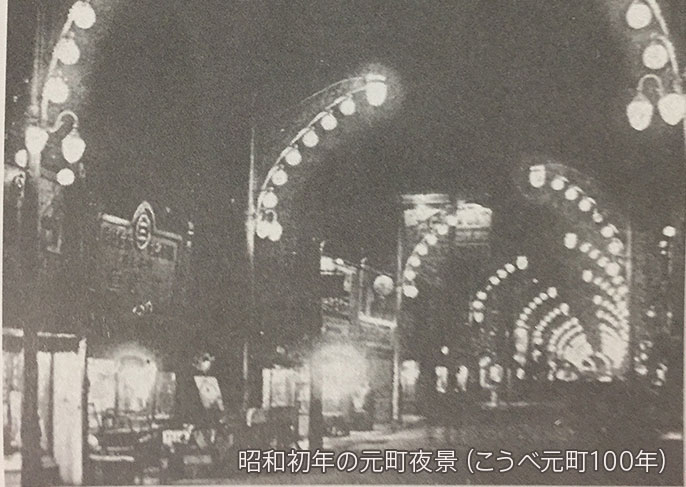
Memories of Suzuran-tou (a decorative street lamp resembling lilies of the valley)
The street’s width was expanded in 1894 and it was paved in 1913, then Kobe Motomachi Shopping Street flourished under the booming economy due to World War I and became the leading commercial district in Kobe. In order to aim to be a more attractive shopping street, “suzuran-tou” (art nouveau style decorative street lamps resembling lilies of the valley) were installed in 1926 and they became a symbol of Motomachi. During World War II lamps were removed due to metal contribution to the war effort. After the war, although their size was halved, different designs of lamps in each block were installed.
Memories of Suzuran-tou (a decorative street lamp resembling lilies of the valley)
The street’s width was expanded in 1894 and it was paved in 1913,
then Kobe Motomachi Shopping Street flourished under the booming economy due to World War I and became the leading commercial district in Kobe. In order to aim to be a more attractive shopping street, “suzuran-tou” (art nouveau style decorative street lamps resembling lilies of the valley) were installed in 1926 and they became a symbol of Motomachi. During World War II lamps were removed due to metal contribution to the war effort. After the war, although their size was halved, different designs of lamps in each block were installed.
More details about suzuran-tou
A long time ago, the lights were arch-shaped and looked like Luminarie

A long time ago, the lights were arch-shaped and looked like Luminarie

-


Various “First Things in Japan”
The street surface was paved in 1913 and according to one theory, it seems have been the first proper asphalting in Japan. Recently, solar panels have been installed on top of the existing arcade roof for the first time in Japan. Hokodo imported the first coffee beans to Japan and opened the first tearoom in Japan at the beginning of the Meiji period. SHIBATA OTOKICHI Yofuku-ten was founded in 1883 and the owner, Otokichi Shibata, was the first Japanese tailor. KOBE FUGETSUDO was the originator of Gaufres (thin dry waffles), HONTAKASSAGOYA and JUCHHEIM were the originators of kakukintsuba (rectangular shaped with sweet bean paste and very light batter) and baumkuchen (traditional German cake), respectively in Japan.
Various “First Things in Japan”
The street surface was paved in 1913 and according to one theory, it seems have been the first proper asphalting in Japan.
Recently, solar panels have been installed on top of the existing arcade roof for the first time in Japan. Hokodo imported the first coffee beans to Japan and opened the first tearoom in Japan at the beginning of the Meiji period. SHIBATA OTOKICHI Yofuku-ten was founded in 1883 and the owner, Otokichi Shibata, was the first Japanese tailor. KOBE FUGETSUDO was the originator of Gaufres (thin dry waffles), HONTAKASSAGOYA and JUCHHEIM were the originators of kakukintsuba (rectangular shaped with sweet bean paste and very light batter) and baumkuchen (traditional German cake), respectively in Japan.
Has the first coffee in Japan been revived?
Kawara senbei (sweet tile-shaped crackers) was born in Motomachi, too.
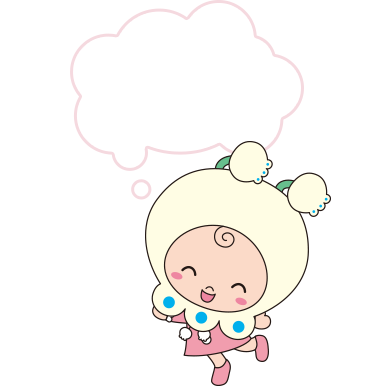
Kawara senbei (sweet tile-shaped crackers) was born in Motomachi, too.
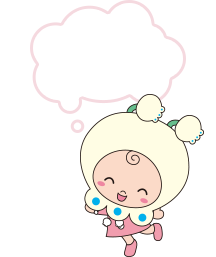
-


Town of Duralumin
Before World War II, the word “moto-bura” (strolling, shopping and eating out in Motomachi) was invented. Such a word proves that Kobe Motomachi Shopping Street was crowded and lively. However, airstrikes caused devastating damage during the war. In spite of the damage, the shopping street revived like a phoenix. In 3 Chome area, store owners cooperated with each other under the motto, “The town should be managed jointly”, and rebuilt stores with duralumin (the material for airplanes) facing along the street. The street was restored as “Duralumin Town” after only 14 months after the war, and shone as a symbol of peace and hope during the confusion of the post-war period.
Town of Duralumin
Before World War II, the word “moto-bura” (strolling, shopping and eating out in Motomachi) was invented.
Such a word proves that Kobe Motomachi Shopping Street was crowded and lively. However, airstrikes caused devastating damage during the war. In spite of the damage, the shopping street revived like a phoenix. In 3 Chome area, store owners cooperated with each other under the motto, “The town should be managed jointly”, and rebuilt stores with duralumin (the material for airplanes) facing along the street. The street was restored as “Duralumin Town” after only 14 months after the war, and shone as a symbol of peace and hope during the confusion of the post-war period.
More details about Duralumin Town
Even the emperor heard the story of Duralumin Town

Even the emperor heard the story of Duralumin Town

-


Overcoming the Great Earthquake
Kobe Motomachi Shopping Street had revived from the war damage and its arcade was added in 1953. Having ridden the wave of high economic growth, the shopping street regained its liveliness. However, the Great Hanshin-Awaji Earthquake struck on January 17, 1995 and 23 store buildings were completely or partially destroyed. While its infrastructure was disrupted, stores were restored promptly and street lighting was kept on for 24 hours for people using the street as a main traffic artery. Having learned lessons from the earthquake, we have been working proactively for crisis management including making a disaster prevention map.
Overcoming the Great Earthquake
Kobe Motomachi Shopping Street had revived from the war damage and its arcade was added in 1953.
Having ridden the wave of high economic growth, the shopping street regained its liveliness. However, the Great Hanshin-Awaji Earthquake struck on January 17, 1995 and 23 store buildings were completely or partially destroyed. While its infrastructure was disrupted, stores were restored promptly and street lighting was kept on for 24 hours for people using the street as a main traffic artery. Having learned lessons from the earthquake, we have been working proactively for crisis management including making a disaster prevention map.
The lights of the shopping street encouraged the damaged Kobe.
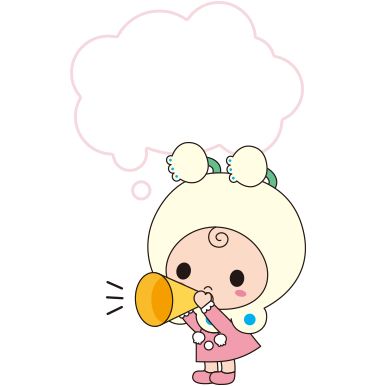
The lights of the shopping street encouraged the damaged Kobe.
